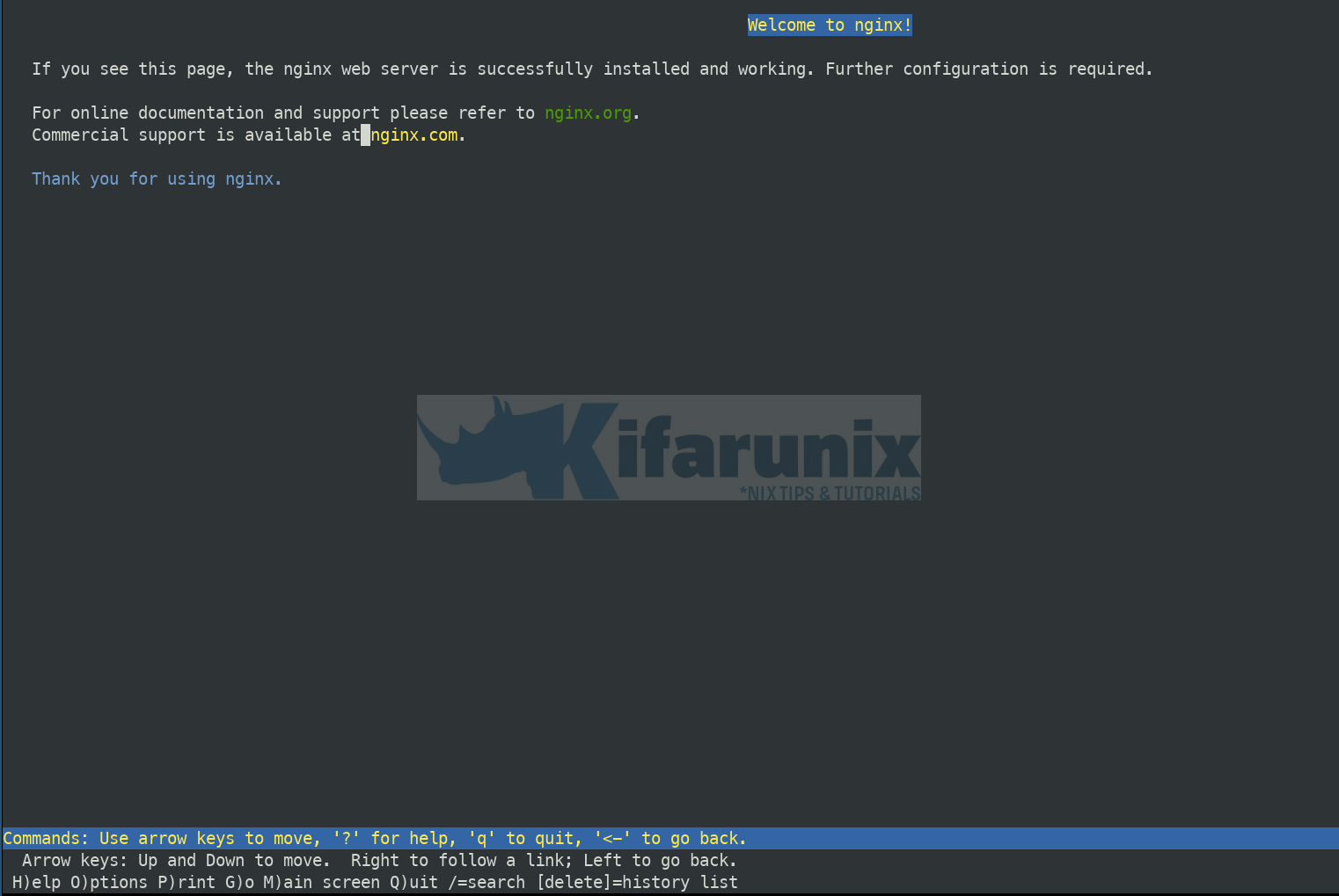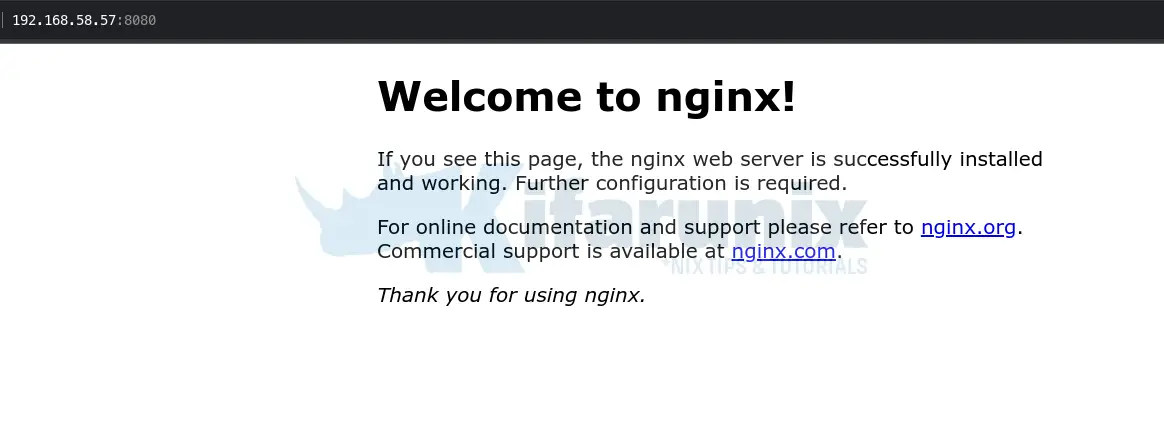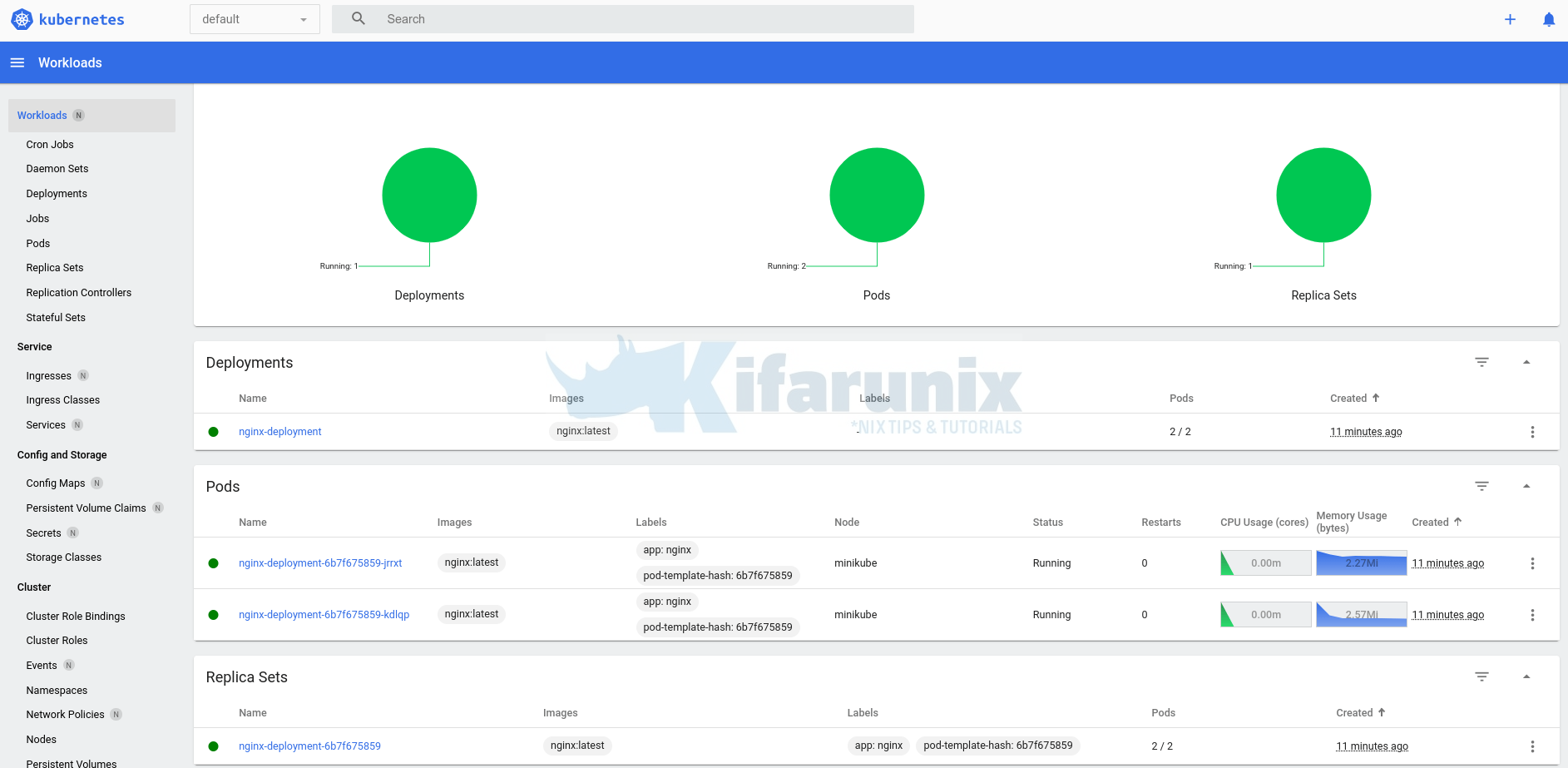If you are planning on getting started with Kubernetes, then installing Minikube on Ubuntu 24.04 might be the first step you want to take. Minikube is a lightweight tool used to implement a simple Kubernetes cluster on your local development system.
Table of Contents
Kubernetes Concepts
If you are getting started with Kubernetes, you can have a look at the core Kubernetes concepts by following the link below.
What are the core concepts in Kubernetes?
Install Minikube on Ubuntu 24.04
Prerequisites
Below is a list of some of the hardware and software requirements for running Minikube on Ubuntu.
System Resources
Ensure your system has;
- At least 2 CPUs
- At least 2GB of free RAM
- At least 20GB of free Disk space
Minikube Drivers
Drivers are components that Minikube uses to interact with various virtualization technologies used to run Kubernetes cluster. They can be a container or virtual machine manager, such as Docker, QEMU, Hyperkit, Hyper-V, KVM, Parallels, Podman, VirtualBox, or VMware Fusion/Workstation.
You can check how to install Docker, VirtualBox or KVM on Ubuntu 24.04 by following the links below;
How to Install Docker CE on Ubuntu 24.04
Install VirtualBox 7 on Ubuntu 24.04
In this tutorial, we will use Docker driver with Minikube.
Internet Access
Ensure the system has Internet connection. This is required to download various Minikube components.
Install Kubectl
Minikube ships with kubectl integrated already (minikube kubectl — <kubectl command line options>).
While this is not entirely necessary, you can just install it by running the commands below.
curl -LO "https://dl.k8s.io/release/$(curl -L -s https://dl.k8s.io/release/stable.txt)/bin/linux/amd64/kubectl"sudo install -o root -g root -m 0755 kubectl /usr/local/bin/kubectlVerify the kubectl version;
kubectl version --client --output=yamlclientVersion:
buildDate: "2023-10-18T11:42:52Z"
compiler: gc
gitCommit: a8a1abc25cad87333840cd7d54be2efaf31a3177
gitTreeState: clean
gitVersion: v1.28.3
goVersion: go1.20.10
major: "1"
minor: "28"
platform: linux/amd64
kustomizeVersion: v5.0.4-0.20230601165947-6ce0bf390ce3
As already mentioned, you can use the kubectl that ships with Minikube
(Run the command after installing Minikube)
minikube kubectl -- version --client -o yamlInstall Minikube
You can easily install Minikube by running the command;
curl -LO https://storage.googleapis.com/minikube/releases/latest/minikube_latest_amd64.debsudo apt install ./minikube_latest_amd64.debConfirm the installation by checking the version of installed Minikube;
minikube versionSample output;
minikube version: v1.32.0
commit: 8220a6eb95f0a4d75f7f2d7b14cef975f050512dStart Minikube
We are running the next commands with a non root user;
su - kifarunixAdd your user to Docker group;
sudo usermod -aG docker $USERLog out and login as user again
Ensure you are part of the Docker group;
iduid=1000(kifarunix) gid=1000(kifarunix) groups=1000(kifarunix),100(users),992(docker),995(vboxsf)Minikube Help Page
Run the command below to check Minikube help information;
minikube --help
minikube provisions and manages local Kubernetes clusters optimized for development workflows.
Basic Commands:
start Starts a local Kubernetes cluster
status Gets the status of a local Kubernetes cluster
stop Stops a running local Kubernetes cluster
delete Deletes a local Kubernetes cluster
dashboard Access the Kubernetes dashboard running within the minikube cluster
pause pause Kubernetes
unpause unpause Kubernetes
Images Commands:
docker-env Provides instructions to point your terminal's docker-cli to the Docker Engine inside minikube.
(Useful for building docker images directly inside minikube)
podman-env Configure environment to use minikube's Podman service
cache Manage cache for images
image Manage images
Configuration and Management Commands:
addons Enable or disable a minikube addon
config Modify persistent configuration values
profile Get or list the current profiles (clusters)
update-context Update kubeconfig in case of an IP or port change
Networking and Connectivity Commands:
service Returns a URL to connect to a service
tunnel Connect to LoadBalancer services
Advanced Commands:
mount Mounts the specified directory into minikube
ssh Log into the minikube environment (for debugging)
kubectl Run a kubectl binary matching the cluster version
node Add, remove, or list additional nodes
cp Copy the specified file into minikube
Troubleshooting Commands:
ssh-key Retrieve the ssh identity key path of the specified node
ssh-host Retrieve the ssh host key of the specified node
ip Retrieves the IP address of the specified node
logs Returns logs to debug a local Kubernetes cluster
update-check Print current and latest version number
version Print the version of minikube
options Show a list of global command-line options (applies to all commands).
Other Commands:
completion Generate command completion for a shell
license Outputs the licenses of dependencies to a directory
Use "minikube --help" for more information about a given command.
Start Local Kubernetes cluster
You can show start Minikube local kubernetes cluster by running;
minikube start --driver=dockerSo what does this command do?
- It starts minikube control plane node in cluster.
- Pulls the base images required to create a simple Kubernetes cluster
- Next, it downloads preconfigured set of Kubernetes binaries to bootstrap the cluster.
- Setup Kubernetes on Docker (VirtualBox is used as the default Minikube driver)
- Configures container networking interface
- Enable some Minikube add-ons such as for storage.
See sample output;
itnixpro@noble-numbat:~$ minikube start --driver=docker
😄 minikube v1.32.0 on Ubuntu 24.04
✨ Using the docker driver based on user configuration
📌 Using Docker driver with root privileges
👍 Starting control plane node minikube in cluster minikube
🚜 Pulling base image ...
💾 Downloading Kubernetes v1.28.3 preload ...
> preloaded-images-k8s-v18-v1...: 403.35 MiB / 403.35 MiB 100.00% 34.57 M
> gcr.io/k8s-minikube/kicbase...: 453.90 MiB / 453.90 MiB 100.00% 38.19 M
🔥 Creating docker container (CPUs=2, Memory=2200MB) ...
🐳 Preparing Kubernetes v1.28.3 on Docker 24.0.7 ...
▪ Generating certificates and keys ...
▪ Booting up control plane ...
▪ Configuring RBAC rules ...
🔗 Configuring bridge CNI (Container Networking Interface) ...
▪ Using image gcr.io/k8s-minikube/storage-provisioner:v5
🔎 Verifying Kubernetes components...
🌟 Enabled addons: default-storageclass, storage-provisioner
💡 kubectl not found. If you need it, try: 'minikube kubectl -- get pods -A'
🏄 Done! kubectl is now configured to use "minikube" cluster and "default" namespace by default
Check Minikube Status
You can check Minikube status using the command below;
minikube statusminikube
type: Control Plane
host: Running
kubelet: Running
apiserver: Running
kubeconfig: Configured
Administering Kubernetes on Minikube
The Minikube simple kubernetes cluster is now up!
Minikube SSH Login
Just like how you would login to a docker container with docker exec -it, command, you can SSH into Minikube container using the command below;
minikube sshYou land into the the minikube docker shell.
Run docker commands inside;
docker psCONTAINER ID IMAGE COMMAND CREATED STATUS PORTS NAMES
887b10137478 6e38f40d628d "/storage-provisioner" 13 minutes ago Up 13 minutes k8s_storage-provisioner_storage-provisioner_kube-system_229d2576-be37-45f4-8e2b-914b97e6a531_1
12cbc1a0d610 ead0a4a53df8 "/coredns -conf /etc…" 13 minutes ago Up 13 minutes k8s_coredns_coredns-5dd5756b68-nb75b_kube-system_449d5ef3-ff4e-4376-912b-8bb3d5694b34_0
0a3f880da164 bfc896cf80fb "/usr/local/bin/kube…" 13 minutes ago Up 13 minutes k8s_kube-proxy_kube-proxy-fj4hh_kube-system_b508788b-d5e7-470a-a1e1-607bfc68bd13_0
676bca7c2953 registry.k8s.io/pause:3.9 "/pause" 13 minutes ago Up 13 minutes k8s_POD_coredns-5dd5756b68-nb75b_kube-system_449d5ef3-ff4e-4376-912b-8bb3d5694b34_0
38783b3dc7dc registry.k8s.io/pause:3.9 "/pause" 13 minutes ago Up 13 minutes k8s_POD_kube-proxy-fj4hh_kube-system_b508788b-d5e7-470a-a1e1-607bfc68bd13_0
eb9c9724e81a registry.k8s.io/pause:3.9 "/pause" 13 minutes ago Up 13 minutes k8s_POD_storage-provisioner_kube-system_229d2576-be37-45f4-8e2b-914b97e6a531_0
d95f881c9586 537434729123 "kube-apiserver --ad…" 14 minutes ago Up 14 minutes k8s_kube-apiserver_kube-apiserver-minikube_kube-system_55b4bbe24dac3803a7379f9ae169d6ba_0
3b283c57d7e7 10baa1ca1706 "kube-controller-man…" 14 minutes ago Up 14 minutes k8s_kube-controller-manager_kube-controller-manager-minikube_kube-system_7da72fc2e2cfb27aacf6cffd1c72da00_0
40f7c0407d98 73deb9a3f702 "etcd --advertise-cl…" 14 minutes ago Up 14 minutes k8s_etcd_etcd-minikube_kube-system_9aac5b5c8815def09a2ef9e37b89da55_0
c5046b7d378d 6d1b4fd1b182 "kube-scheduler --au…" 14 minutes ago Up 14 minutes k8s_kube-scheduler_kube-scheduler-minikube_kube-system_75ac196d3709dde303d8a81c035c2c28_0
55bae56fd1cf registry.k8s.io/pause:3.9 "/pause" 14 minutes ago Up 14 minutes k8s_POD_kube-controller-manager-minikube_kube-system_7da72fc2e2cfb27aacf6cffd1c72da00_0
5f8a2f23d88e registry.k8s.io/pause:3.9 "/pause" 14 minutes ago Up 14 minutes k8s_POD_kube-apiserver-minikube_kube-system_55b4bbe24dac3803a7379f9ae169d6ba_0
b8b3522d0385 registry.k8s.io/pause:3.9 "/pause" 14 minutes ago Up 14 minutes k8s_POD_etcd-minikube_kube-system_9aac5b5c8815def09a2ef9e37b89da55_0
bb8d527c26a5 registry.k8s.io/pause:3.9 "/pause" 14 minutes ago Up 14 minutes k8s_POD_kube-scheduler-minikube_kube-system_75ac196d3709dde303d8a81c035c2c28_0
Check docker images;
docker imagesREPOSITORY TAG IMAGE ID CREATED SIZE
registry.k8s.io/kube-apiserver v1.28.3 537434729123 5 months ago 126MB
registry.k8s.io/kube-controller-manager v1.28.3 10baa1ca1706 5 months ago 122MB
registry.k8s.io/kube-scheduler v1.28.3 6d1b4fd1b182 5 months ago 60.1MB
registry.k8s.io/kube-proxy v1.28.3 bfc896cf80fb 5 months ago 73.1MB
registry.k8s.io/etcd 3.5.9-0 73deb9a3f702 10 months ago 294MB
registry.k8s.io/coredns/coredns v1.10.1 ead0a4a53df8 13 months ago 53.6MB
registry.k8s.io/pause 3.9 e6f181688397 17 months ago 744kB
gcr.io/k8s-minikube/storage-provisioner v5 6e38f40d628d 3 years ago 31.5MB
docker system dfTYPE TOTAL ACTIVE SIZE RECLAIMABLE
Images 8 8 752.4MB 4.057MB (0%)
Containers 15 14 162B 0B (0%)
Local Volumes 0 0 0B 0B
Build Cache 0 0 0B 0B
Exit when done;
exitGet Kubernetes Cluster Resource Information
Let’s run a few Kubernetes commands;
Get Kubernetes cluster information;
minikube kubectl -- cluster-info > kubectl.sha256: 64 B / 64 B [-------------------------] 100.00% ? p/s 0s
> kubectl: 47.56 MiB / 47.56 MiB [----------] 100.00% 197.12 MiB p/s 400ms
Kubernetes control plane is running at https://192.168.49.2:8443
CoreDNS is running at https://192.168.49.2:8443/api/v1/namespaces/kube-system/services/kube-dns:dns/proxy
To further debug and diagnose cluster problems, use 'kubectl cluster-info dump'.
Lists all the nodes in the current namespace.
minikube kubectl -- get nodesNAME STATUS ROLES AGE VERSION
minikube Ready control-plane 17m v1.28.3
List all services in the current namespace;
minikube kubectl -- get servicesNAME TYPE CLUSTER-IP EXTERNAL-IP PORT(S) AGE
kubernetes ClusterIP 10.96.0.1 443/TCP 18m
You can run other commands as you wish.
Deploy Simple Kubernets Application
Let’s create a simple Nginx manifest file to define the desired state;
vim nginx-deployment.yamlPaste the following content;
apiVersion: apps/v1
kind: Deployment
metadata:
name: nginx-deployment
spec:
replicas: 2
selector:
matchLabels:
app: nginx
template:
metadata:
labels:
app: nginx
spec:
containers:
- name: nginx
image: nginx:latest
ports:
- containerPort: 80
Deploy Nginx;
minikube kubectl -- apply -f nginx-deployment.yamlList deployments;
minikube kubectl -- get deployments
NAME READY UP-TO-DATE AVAILABLE AGE
nginx-deployment 0/2 2 0 13s
Check the pods. You should see two of them due to replica of 2;
minikube kubectl -- get pods
NAME READY STATUS RESTARTS AGE
nginx-deployment-6b7f675859-ljsh8 1/1 Running 0 7s
nginx-deployment-6b7f675859-qvnpn 1/1 Running 0 7s
Next, you need to expose this service for external access;
vim nginx-service.yaml
apiVersion: v1
kind: Service
metadata:
name: nginx-service
spec:
type: NodePort
selector:
app: nginx
ports:
- name: http
port: 80
targetPort: 80
nodePort: 30000 # Choose an available port number
Ensure no other service is being exposed via port 31500/tcp defined above.
Apply the service;
minikube kubectl -- apply -f nginx-service.yamlCheck the services to find out an external port to access it;
minikube kubectl -- get services
NAME TYPE CLUSTER-IP EXTERNAL-IP PORT(S) AGE
kubernetes ClusterIP 10.96.0.1 443/TCP 60m
nginx-service NodePort 10.107.130.31 80:30000/TCP 3s
get more details;
minikube kubectl -- describe service nginx-service
Name: nginx-service
Namespace: default
Labels:
Annotations:
Selector: app=nginx
Type: NodePort
IP Family Policy: SingleStack
IP Families: IPv4
IP: 10.107.130.31
IPs: 10.107.130.31
Port: http 80/TCP
TargetPort: 80/TCP
NodePort: http 30000/TCP
Endpoints: 10.244.0.8:80,10.244.0.9:80
Session Affinity: None
External Traffic Policy: Cluster
Events:
Accessing the Service. You can print the url or open service on the default browser;
minikube kubectl -- service nginx-serviceSample browser;

and command line output;
|-----------|---------------|-------------|---------------------------|
| NAMESPACE | NAME | TARGET PORT | URL |
|-----------|---------------|-------------|---------------------------|
| default | nginx-service | http/80 | http://192.168.49.2:30000 |
|-----------|---------------|-------------|---------------------------|
🎉 Opening service default/nginx-service in default browser...
Unfortunately, our service is exposed via docker bridge interface IP and hence, makes it hard to access externally.
You can do port forwarding of Nginx target port to some other unused ports as follows;
minikube kubectl -- port-forward service/nginx-service --address=0.0.0.0 8080:80Sample output;
Forwarding from 0.0.0.0:8080 -> 80
Handling connection for 8080
Handling connection for 8080Press CTRL+C to cancel.
You should now be able to access your App outside Minikube cluster, http://<server-IP>:8080.

You can now proceed to explore Kubernetes!
Enable Minikube Addons
Addons are components that can be used to extend the functionality of Minikube;
There is quite a number of addons;
minikube addons list
|-----------------------------|----------|--------------|--------------------------------|
| ADDON NAME | PROFILE | STATUS | MAINTAINER |
|-----------------------------|----------|--------------|--------------------------------|
| ambassador | minikube | disabled | 3rd party (Ambassador) |
| auto-pause | minikube | disabled | Google |
| cloud-spanner | minikube | disabled | Google |
| csi-hostpath-driver | minikube | disabled | Kubernetes |
| dashboard | minikube | disabled | Kubernetes |
| default-storageclass | minikube | enabled ✅ | Kubernetes |
| efk | minikube | disabled | 3rd party (Elastic) |
| freshpod | minikube | disabled | Google |
| gcp-auth | minikube | disabled | Google |
| gvisor | minikube | disabled | Google |
| headlamp | minikube | disabled | 3rd party (kinvolk.io) |
| helm-tiller | minikube | disabled | 3rd party (Helm) |
| inaccel | minikube | disabled | 3rd party (InAccel |
| | | | [[email protected]]) |
| ingress | minikube | disabled | Kubernetes |
| ingress-dns | minikube | disabled | Google |
| istio | minikube | disabled | 3rd party (Istio) |
| istio-provisioner | minikube | disabled | 3rd party (Istio) |
| kong | minikube | disabled | 3rd party (Kong HQ) |
| kubevirt | minikube | disabled | 3rd party (KubeVirt) |
| logviewer | minikube | disabled | 3rd party (unknown) |
| metallb | minikube | disabled | 3rd party (MetalLB) |
| metrics-server | minikube | disabled | Kubernetes |
| nvidia-driver-installer | minikube | disabled | Google |
| nvidia-gpu-device-plugin | minikube | disabled | 3rd party (Nvidia) |
| olm | minikube | disabled | 3rd party (Operator Framework) |
| pod-security-policy | minikube | disabled | 3rd party (unknown) |
| portainer | minikube | disabled | 3rd party (Portainer.io) |
| registry | minikube | disabled | Google |
| registry-aliases | minikube | disabled | 3rd party (unknown) |
| registry-creds | minikube | disabled | 3rd party (UPMC Enterprises) |
| storage-provisioner | minikube | enabled ✅ | Google |
| storage-provisioner-gluster | minikube | disabled | 3rd party (Gluster) |
| volumesnapshots | minikube | disabled | Kubernetes |
|-----------------------------|----------|--------------|--------------------------------|
You can enable an addon using the command;
minikube addons enable <name>For example, enable Minikube dashboard;
minikube addons enable dashboard
💡 dashboard is an addon maintained by Kubernetes. For any concerns contact minikube on GitHub.
You can view the list of minikube maintainers at: https://github.com/kubernetes/minikube/blob/master/OWNERS
▪ Using image docker.io/kubernetesui/dashboard:v2.7.0
▪ Using image docker.io/kubernetesui/metrics-scraper:v1.0.8
💡 Some dashboard features require the metrics-server addon. To enable all features please run:
minikube addons enable metrics-server
🌟 The 'dashboard' addon is enabled
Also enable Metrics server;
minikube addons enable metrics-serverYou can check the services for these addons on the kube-system namespace;
minikube kubectl -- get services --all-namespacesNAMESPACE NAME TYPE CLUSTER-IP EXTERNAL-IP PORT(S) AGE
default kubernetes ClusterIP 10.96.0.1 443/TCP 27m
kube-system kube-dns ClusterIP 10.96.0.10 53/UDP,53/TCP,9153/TCP 27m
kube-system metrics-server ClusterIP 10.109.17.235 443/TCP 4m9s
kubernetes-dashboard dashboard-metrics-scraper ClusterIP 10.109.191.202 8000/TCP 3m56s
kubernetes-dashboard kubernetes-dashboard ClusterIP 10.110.150.153 80/TCP 3m56s
To access the dashboard externally;
minikube kubectl -- port-forward service/kubernetes-dashboard -n kubernetes-dashboard --address=0.0.0.0 8888:80You dashboard is now availanle on http://minikube-server-IP:8888;

Explore the dashboard further.
Stop and Delete Minikube Profile
You can always stop and delete Minikube profile;
minikube profile listSample output;
|----------|-----------|---------|--------------|------|---------|---------|-------|--------|
| Profile | VM Driver | Runtime | IP | Port | Version | Status | Nodes | Active |
|----------|-----------|---------|--------------|------|---------|---------|-------|--------|
| minikube | docker | docker | 192.168.49.2 | 8443 | v1.26.3 | Running | 1 | * |
|----------|-----------|---------|--------------|------|---------|---------|-------|--------|
Or get current profile;
minikube profileStop Minikube;
minikube stopDelete current profile;
minikube deleteor specific profile;
minikube delete --profile <profile name>See example;
minikube delete --profile minikube
🔥 Deleting "minikube" in docker ...
🔥 Deleting container "minikube" ...
🔥 Removing /home/kifarunix/.minikube/machines/minikube ...
💀 Removed all traces of the "minikube" cluster.
Or;
minikube delete --all --purgeAnd that concludes our guide on how to install Minikube on Ubuntu 24.04.
Further Reading
Read more on getting started with Minikube.

